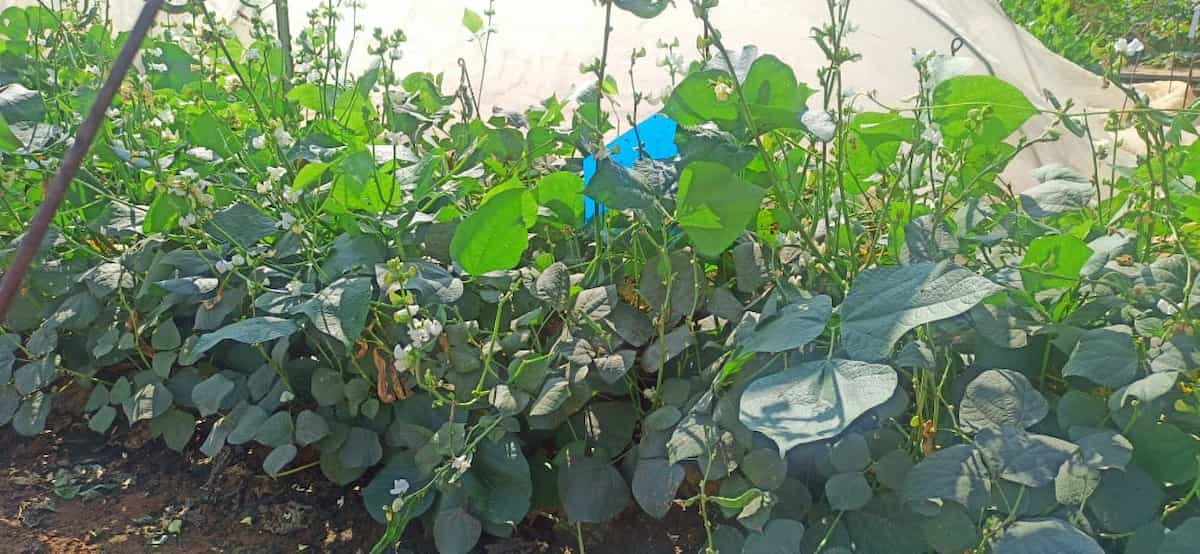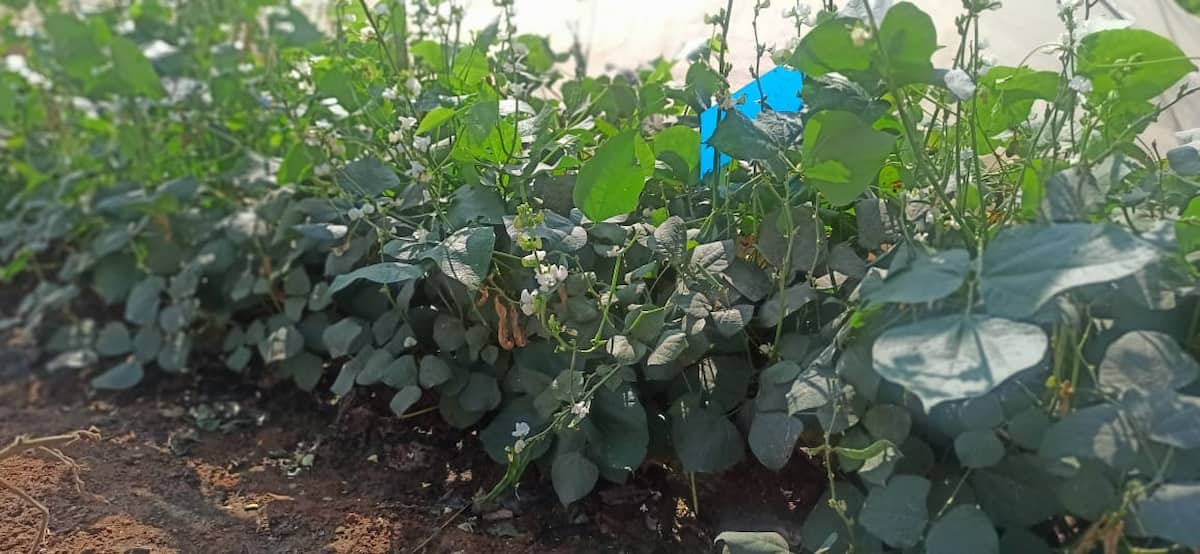Lablab is a crucial leguminous crop grown for food and fodder, but the low number of female flowers in the plant is a challenge for growers as they produce pods that contain seeds. Various methods can increase the proportion of female flowers, including hormonal treatments, genetic modification, and environmental control.

Regulating factors such as light intensity, temperature, and soil moisture can impact the production of female flowers. Given its high protein content and adaptability to various soil and climate conditions, these methods can enhance lablab yield and improve food security. Additionally, Lablab provides benefits like improving soil fertility and serving as nutritious fodder for livestock, making it an essential crop for sustainable agriculture.
How to Increase Female Flowers in Lablab/Indian Beans
Introduction to Lablab Cultivation
Lablab (Lablab purpureus) is a leguminous crop grown globally and has many uses due to its adaptability to different soil and climate conditions and high protein content. To cultivate Lablab, it is necessary to have well-drained soil with a pH range of 6-7.5; the minimum temperature required is 15°C. It can be grown in monoculture, intercropping, or mixed cropping systems and propagated through seed, cuttings, or tissue culture. One of the main advantages of Lablab is its ability to improve soil fertility, which can lead to increased yields in subsequent crops.
It also serves as a nutritious food source for humans and animals, making it an essential crop for food security. Additionally, Lablab is used as a fodder crop, providing an excellent source of protein and minerals for livestock. Overall, Lablab is a versatile crop that benefits farmers and their communities. Its ability to thrive in different environments and high protein content make it an essential crop for sustainable agriculture and food security.
Understand the Anatomy of Lablab Flowers
The flowers of Lablab (Lablab purpureus) have distinct male and female structures. The male flower produces pollen and comprises the stamen, filament, and another. The stamen functions as the male reproductive organ, while the filament holds the anther where the pollen grains are generated. On the other hand, the female flower is responsible for producing the pods that contain the seeds and consists of the stigma, style, and ovary.
The stigma acts as the receptive surface for the pollen grains, and the style supports the stigma, connecting it to the ovary, which contains the ovules that the pollen will fertilize to create the seeds. Understanding the anatomy of Lablab flowers is vital for growers to achieve optimal pollination and increase their crop yield potential.
Best Variety of Cultivation Lablab
These are some popular varieties of Lablab for cultivation. They include Rongai, Highworth, Rongai Blue, Highworth Red, Rongai White, Rongai Purple, Highworth White, Highworth Purple, Kibwezi White, Kibwezi Red, Kibwezi Blue, Kibwezi Purple, Serengeti White, Serengeti Red, Serengeti Blue, Serengeti Purple, Egerton Green, Egerton White, Egerton Red, and Egerton Blue.
Optimal Growing Conditions for Lablab
- Lablab requires warm temperatures and can tolerate drought and waterlogging.
- Well-drained soil with a pH range of 6-7.5 is ideal for lablab cultivation, rich in organic matter and fertility.
- Full sunlight is necessary for optimal growth and yield.
- Adequate water supply is crucial, especially during the flowering and pod-setting stages.
- Proper fertilization with nitrogen, phosphorus, and potassium can increase yield potential.
- Pests and diseases such as pod borers, aphids, and fungal infections are common, and proper management practices are necessary for healthy crop growth.
In case you missed it: How to Increase Female Flowers in Coconut: Explained in 10 Steps to Increase Yield and Profit

Lablab Flowering Stage
Lablab (Lablab purpureus) typically enters the flowering stage around 60-90 days after planting, depending on the cultivar and growing conditions. Lablab plant produces both male and female flowers during this stage. Male flowers produce pollen, while female flowers contain ovules that pollen can fertilize to produce pods containing the seeds.
Effective management of the flowering stage is crucial to ensure successful pollination and maximize the crop’s yield potential. Proper irrigation, fertilization, and pest control are essential during this period. Growers should also monitor the weather conditions and take necessary measures to protect the crop from adverse conditions such as high winds and heavy rains that can affect pollination.
Factors that Affect Less Female Flowers in Lablab
- Genetics: Some lablab cultivars produce fewer female flowers than others.
- Environmental conditions: Temperature, moisture levels, and light intensity can impact the production of female flowers.
- Nutrient availability: A lack of essential nutrients like phosphorus and potassium can reduce the number of female flowers produced.
- Insect infestations: Insect pests such as thrips and aphids can damage lablab flowers and reduce the number of female flowers.
- Disease infections: Fungal infections such as powdery mildew can affect the production of female flowers.
- Water stress: Insufficient or irregular watering can cause stress and reduce female flower production.
- Soil pH: Lablab requires a pH range of 6-7.5 for optimal growth, and extreme soil pH can impact the production of female flowers.
- Soil structure: Compacted or poorly drained soil can restrict root development and reduce the number of female flowers produced.
10 Simple Tips to Increase Female Flowers in Lablab
- Choose cultivars with high female flower production.
- Ensure optimal growing conditions such as temperature, moisture levels, and light intensity.
- Conduct regular soil testing to ensure nutrient availability.
- Apply appropriate fertilizers, especially those high in phosphorus and potassium.
- Plant in well-drained soil with good fertility and organic matter content.
- Use irrigation techniques such as drip irrigation to ensure consistent moisture levels.
- Use integrated pest management strategies to control insect pests.
- Conduct regular scouting for pest and disease infestations.
- Apply appropriate fungicides to control fungal infections.
- Avoid over-fertilization, as this can lead to excessive vegetative growth at the expense of flower production.
In case you missed it: How to Increase Female Flowers in Snake Gourd: Explained in 10 Simple Steps

Conclusion
To sum up, increasing the number of female flowers in Lablab is crucial to boost crop yield and addressing food insecurity. Basic measures like proper nutrient management, pest and disease control, and environmental regulation can be useful. Moreover, advanced techniques, including genetic modification and hormonal treatments, can further enhance female flower production. By adopting these methods, growers can realize the full potential of Lablab as a high-protein food and fodder crop, benefiting agricultural production and human nutrition.
- Feed Your Flock for Less: Top 10 Tips to Save on Chicken Feed
- Ultimate Guide to Ossabaw Island Hog: Breeding, Raising, Diet, and Care
- Hatching Answers: The Top 10 Reasons Your Chickens Aren’t Laying Eggs
- Eggs and Economics: Breaking Down the Cost of Raising Backyard Chickens
- Defend Your Greens: Proven Methods to Keep Iguanas Out of Your Garden
- Ultimate Guide to Cinnamon Queen Chicken: A Comprehensive Guide for Beginners
- Ultimate Guide to California Tan Chicken: Breeding, Raising, Diet, Egg-Production and Care
- Ultimate Guide to Marsh Daisy Chicken: Breeding, Raising, Diet, and Care
- 10 Types of Chicken Farming Businesses You Can Start for Profits